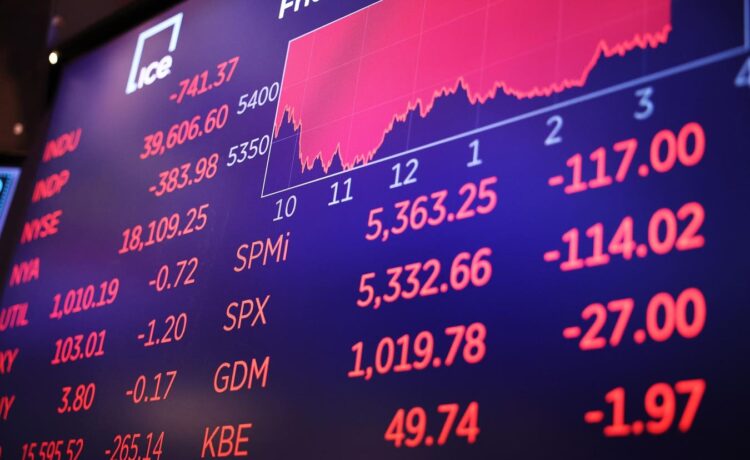NEW YORK, NEW YORK – AUGUST 02: Stock market numbers are displayed on a screen at the New York Stock … [+]
I love index funds.
The vast majority of my investment dollars are in a mix of index funds and I’ve been pleased with their performance.
That said, it’s important to understand the risks of any investment you make, especially if you love them, and low cost S&P 500 index funds are not without risk.
High Concentration in Technology
The S&P 500 is heavily concentrated in technology. As of January 2025, nine of the top ten holdings in the S&P 500 are technology companies. Berkshire Hathaway is the lone exception at #10. The top 9 companies account for over a third of the value of the S&P 500. The same holds true if you look at most Total Market Index Funds too.
Whether you believe that’s good or bad depends on your thoughts about the future of technology companies, but a third of the U.S. gross domestic product is not technology.
The S&P 500 is a far smaller, but very concentrated, slice of U.S. businesses. Even if you were to expand it to a Total Market fund, it would still be heavily technology focused.
Despite this, I still use it as part of my three fund porfolio.
100% Equities
By design, the S&P 500 is 100% equities. If it is your only investment, this may be too high an asset allocation to domestic U.S. equities.
Stocks will always be more volatile than many other investments. Bonds, real estate, and other asset classes don’t move as quickly for a variety of reasons. Stocks are being traded every day and, as a result, can be quite volatile.
In 2008, the S&P 500 fell 38.49%. If that was your only investment holding, it is extremely hard to stomach a near 40% drop in your portfolio. And that’s on top of the world events that caused the drop. Imagine that drop on top of losing your job or your home as a result of the financial crisis.
As part of a diversified portfolio, a low cost S&P 500 index fund makes a lot of sense but on its own it may be too volatile.
Volatility Is Difficult To Navigate
Volatility can have a negative impact on your investment psyche. It’s easy to be a stoic about your investments if they rise and fall in relatively small movements.
It’s harder to remain calm when the market gets volatile. This can have a big impact on your behavior if you’re not the type of person who can’t stand the thought of losing 38.49% of your portfolio in a single year.
Or have your portfolio stagnate for 12 and a half years:
S&P 500 Performance from December 10, 1999 to August 17, 2012
These are all scenarios that have played out with the S&P 500 over the last 20 years.
Volatility and unpredictability are difficult to navigate, which is why so many investors are happy to lean on advisors who do it for them. They pay for investment advice but also for a “voice of reason” to help them get through those periods.
S&P 500 Is Still a Great Option
Given all these known risks, I continue to put my money into index funds. That’s because it’s the best option given the alternatives. I dabble a bit in dividend fund investing as well, to generate cash flow, but the majority of my portfolio remains in these index funds.
Where else can you get instant diversification at an incredibly low cost?
Despite these risks, a low cost S&P 500 index fund will continue to play a role in my portfolio.















